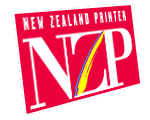Flanked by the 2007 Award-winning work, attendees were first shown behind-the-scenes footage of this year's judging process and then given an open-forum opportunity with judges on stage.
While judges welcomed the fact their task was getting ever-harder due to the increasing quality of work being produced, they equally lamented the basic oversights which see top quality work going unrecognised.
As clearly illustrated in the real-life judging scenes, this could be anything from one scuff mark, an ink blemish or blunt finishing knife to a staple out of alignment, a slight shift in registration or even a "lazy" squeegee.
An example given in the open-forum environment was of an excellently-produced 250-page book which had to be dismissed because of a significant ink blemish on page three. Another company had taken the judges to task over jobs that earned recognition elsewhere - but then had to concede each of the particular samples submitted to Pride In Print had clear faults.
Judges stressed that entrants needed to scrutinise every element of their jobs before submitting - "because we certainly will". Potential entries also needed to be put aside at the time of production, rather than being pulled out of job bags months later when they may have suffered damaged.
The need to meticulous package entries was highlighted - "we don't know if damage has occurred during transit or if it was the way it was produced".
Furthermore, judges said entrants needed to "tell us the story". An example was given of one job that would normally have been overlooked, but when judges realised it had been printed on a two-colour press - "we were really impressed they created this job on that process".
A wide range of printing and allied industries were represented in the Wellington audience.
Having recently purchased a new Heidelberg press, Neale Print proprietor Henry Neale was hoping to apply the judges' points in an attempt to earn a Gold Medal at next year's Awards.
"It gives you more idea of what they are actually looking for - the printing could be fine, but the finishing and so forth could muck it all up. We've got a few ideas for next year what we will do."
Cluster Creative proprietor and graphic designer Rob McAlister had noted the comments about attention to the "little things".
"You know when it's a good print job or a bad job, but it's that real attention to detail. When you are putting in an entry you might take a look at it and say 'that's fine' and you don't actually look through 300 pages."
Thames Publications sales manager Ross Curd focused on the need to provide detailed job information.
"Like the plates - they're Agfa, their thickness is this, this is the size of them.
"It's a [hassle] to dig out all that information sometimes, but I can now see it from the judges' side - they are printers and they want all of that information to get a picture in their minds."
GEON Wellington's Terry Browne, Lynette Francis and Phillipa MacFarlane were inspired by the message to demonstrate pride throughout the whole process.
"You're so busy in your own day-to-day jobs, but we need to be thinking more about the job when it arrives as to whether it can be a Pride In Print project right from the start."
Gravure Packaging general manager Greg Chapman said his company had previously established an in-house team to review potential winning work on a monthly basis. Even though a regular Pride In Print winner, Mr Chapman said he'd nonetheless taken onboard points made about entry detail and presentation.
As a major supplier to the printing industry, Spicers Paper account manager Andrew Simon welcomed the barometer of industry trends provided by the seminar.
"One of the comments was that the digital side of it is getting close to offset. So what were regarded maybe five years ago as basically colour photocopiers are now a legitimate force in the print industry.
"As a paper supplier, we have to be mindful that we bring in stocks that suit the digital industry. They are only as good as the quality we and the ink companies supply."
While viewing this year's Award-winning entries, AXA Insurance designer Lisa Cavie said she was impressed with the high standard of work being produced and had picked up some pointers that may benefit future entries from her company.
Another message to come through at the seminar was the high level of integrity demonstrated during the judging process - entries are number-referenced only and judges simply "walk away" if one of their jobs is being assessed.
The amount of pride employees take out of winning awards was also emphasised - an example given of a company "giving up" on getting back a Gold Medal, when one proud employee kept hold of it to show his "wife, auntie and grandmother".
To aid future entrants, the Pride In Print Committee is in the throes of redesigning the entry form to accommodate much greater job detail. Miniature trophies are also to be introduced for ancillary companies who submit Supreme Award-winning entries, said Pride In Print Awards Manager Sue Archibald.
"Only the producer of the work can receive the actual Supreme Award trophy, but if a client/designer etc has taken the time to enter a piece of work that ultimately wins the Supreme Award, then this will be recognised in the future."
For two days prior to the Judging Seminar, the Pride In Print Awards display was opened to schools and the general public. A PrintNZ Training careers breakfast was also well-attended by local teachers, said PrintNZ communications advisor Alicia Lambert.
"The teachers were full of questions about the design and print career opportunities. Several took the opportunity to visit Astra Print and were glad they had. PrintNZ Training would like to thank Steffan Pedersen and Darren Comrie for their input into the careers breakfast and talk."







